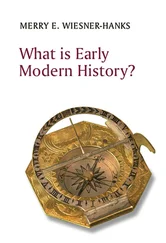R. Nisbet Bain - The Cambridge Modern History
Здесь есть возможность читать онлайн «R. Nisbet Bain - The Cambridge Modern History» — ознакомительный отрывок электронной книги совершенно бесплатно, а после прочтения отрывка купить полную версию. В некоторых случаях можно слушать аудио, скачать через торрент в формате fb2 и присутствует краткое содержание. Жанр: unrecognised, на английском языке. Описание произведения, (предисловие) а так же отзывы посетителей доступны на портале библиотеки ЛибКат.
- Название:The Cambridge Modern History
- Автор:
- Жанр:
- Год:неизвестен
- ISBN:нет данных
- Рейтинг книги:4 / 5. Голосов: 1
-
Избранное:Добавить в избранное
- Отзывы:
-
Ваша оценка:
- 80
- 1
- 2
- 3
- 4
- 5
The Cambridge Modern History: краткое содержание, описание и аннотация
Предлагаем к чтению аннотацию, описание, краткое содержание или предисловие (зависит от того, что написал сам автор книги «The Cambridge Modern History»). Если вы не нашли необходимую информацию о книге — напишите в комментариях, мы постараемся отыскать её.
The first series was planned by Lord Acton and edited by him with Stanley Leathes, Adolphus Ward and George Prothero.
The Cambridge Modern History Collection features all five original volumes:
Volume I: The Renaissance
Volume II: The Reformation, the End of the Middle Ages
Volume III The Wars of Religion
Volume IV: The 30 Years' War
Volume V: The Age of Louis XIV
The Cambridge Modern History — читать онлайн ознакомительный отрывок
Ниже представлен текст книги, разбитый по страницам. Система сохранения места последней прочитанной страницы, позволяет с удобством читать онлайн бесплатно книгу «The Cambridge Modern History», без необходимости каждый раз заново искать на чём Вы остановились. Поставьте закладку, и сможете в любой момент перейти на страницу, на которой закончили чтение.
Интервал:
Закладка:
The rise of Antwerp is also significant of the change in the centre of gravity of the world’s commerce which has occurred, since ocean voyages have become the chief means of mercantile intercourse. The Mediterranean ports were left stranded, and Lisbon failed to take their place. The trade which had been opened up by Portuguese enterprise did not react on home industries, or give increased and profitable employment to productive labourers. The carrying trade between Lisbon and Antwerp was largely taken up by the merchants of Holland, who had ships and sailors engaged in fishing, and these could be easily and remuneratively employed in other waters. The Iberian peninsula offered an immense market for the salt-fish, the cloth, and linen of the Low Countries; Antwerp merchants had the means of purchasing the products brought from the East. While the energies of the Spaniards and Portuguese were thrown into the task of establishing their power in the Indies, and prosecuting distant trade, the Netherlanders reaped much of the profit of carrying goods in European waters, and their industrial and maritime activity was greatly stimulated. Antwerp obtained for a time that supremacy in the world’s commerce, which has never since been wrested from northern ports.
The discussion of the application of capital to commerce, and of the changes in business practice which it introduced, have led us far away from the rise of the Augsburg merchants in the fifteenth century. We should have to turn back to a very early time in order to trace the first beginnings of the influence which capital exercised on manufactures; indications of it can be found in the thirteenth century, but it was at that date quite exceptional. Medieval industrial organisation usually consisted of a number of separate gilds, each composed of independent craftsmen; these associations had the power of regulating the trades with which they were respectively connected, subject to the approval by municipal or royal authority of the manner in which they exercised their rights, and of the particular rules which they framed. If we are careful to remember that, while this was the ordinary state of affairs, it was not universal in all cities, that its origin was not the same in all places and that it did not hold good equally in all trades, we may look a little more closely at the economic features and conditions of this type of organisation.
The craft-gild was formed with reference to the requirements of a particular city, and looked to a very limited circle of the public for the demand for goods. Part of its function was to see that the quality of the goods was maintained; but its policy was chiefly determined by a desire to give each member his fair share of the available employment. Each master was to have his chance, and none was allowed, by unduly multiplying the number of apprentices or journeymen, to supplant other workmen. These restrictions told in favour of the good training of apprentices, and improved their chance of employment as journeymen after they had served their time, but the rules hampered any man who was trying to push his business and manufacture on a large scale.
The master workman would be in the habit of buying on his own account the material which he required, or he might have the advantage of purchasing wholesale in association with other members of the craft; he would also sell the finished article to the man who wished to use it-the consumer; in some crafts, such as the tailors’, an even more primitive practice was long maintained, and the craftsman worked on materials furnished to him by the consumers. Hence we can see that there were two points at which the intervention of the capitalist would easily occur. In the case of goods exported to a distant market, when an exporting merchant was the customer, he might find it convenient to have them manufactured under his direction and at his time instead of procuring them from an independent craftsman; the transition was easy from the position of a constant purchaser to that of an employer. On the other hand, when good$ were made from imported materials, it was convenient for the merchant to retain his ownership in the materials and employ craftsmen to work them up. The effect of drawing any industry into the circle of distant trade with reference either to the materials or to the vent for the product, was to render capitalist intervention almost inevitable; when the capitalist system is thoroughly adopted, the employer owns the materials and also undertakes to act as an intermediary in the disposal of finished goods. It is needless to observe that, when this transition is complete, it becomes the interest of the employer to push his trade and to turn over his capital as rapidly as may be; he has to cater for a varying market, and the restrictions devised for those who have been sharing the employment afforded by a known market would not suit him at all.
There were some industries, however, in great commercial centres, which from their first planting were dependent, either for materials or for the vent of their products, on distant trade. Organisation, in such callings, was almost certain to proceed on capitalist lines; the rules laid down by the leading men were devised by great employers, and not, as in the craft-gilds, by small masters who personally worked at the trade. The working and dressing of cloth at Florence was dependent on the importation of undressed cloths, which were converted into excellently finished fabrics and exported on profitable terms. This Arte di Ccdimala appears to have been organised and regulated as a capitalist industry from the earliest times; and the Arte di Lana, which was dependent on the importation of raw wool from the North, was also an association of wealthy employers. The Arte di Seta was another long-established industry; it had been improved by immigrants from Lucca in the early part of the fourteenth century, and was conducted on similar lines. Capitalist organisation was not universal in industries of this commercial type; for we find that the silk-trade of Venice in the thirteenth century was regulated by small masters, who were however dependent on the services of merchants for securing a stock of materials to be used in regular work and for selling the fabrics of the looms; it need be no matter of surprise, that a change had occurred before the most flourishing period of the Venetian silk-trade in the fifteenth century, and that merchants were engaged in it as capitalist employers.
The capitalist organisation of industry was not confined to the more advanced communities, but might be found in the most backward countries, when the commercial conditions were favourable. In the twelfth and thirteenth centuries, when there was little export of cloth, weavers’ gilds existed in London, Winchester, Beverley, and other centres, and the trade was probably conducted by independent workmen. But the clothing-trade of England was developed with increasing success, so that in the fifteenth century large quantities of woollen cloths were exported; it was evidently assuming the conditions of a capitalist trade, and was being organised by large employers. In England the transition to the new condition of affairs took place with little friction; weaving began to be practised in villages where civic gilds had no jurisdiction, and the quality of the product was inspected by a royal officer, so that the capitalist system of giving out materials to the weavers and buying their cloth was able to make its way imperceptibly.
In continental towns, where there was a large number of independent masters strongly organised in craft-gilds, a very decided antagonism prevailed between the old order and the new that was being gradually introduced. In France the corps-de-metier assumed a more and more oligarchical character, as increasing obstacles were being put in the way of journeymen who aimed at attaining the status of independent masters. A further indication of the same tendency, and of the differentiation of the journeymen as a permanent class within the trade, is found in the existence of journeyman gilds at Strassburg and elsewhere. The rise of a wealthy capitalist class within a craft-gild tended on the one hand to change the character of the old association and to make it a company of capitalists and traders, each of whom employed a large number of paid workmen; and, on the other hand, to call forth associations among the journeymen who had little hope of attaining to a higher status as independent masters, and who were therefore interested in maintaining favourable conditions for a wage-earning class. In other cases the pressure of the changed conditions was most severely felt by the small masters, since the men with large capital and a growing trade were able to pay better wages; the capitalists and journeymen were then united in opposition to the small masters, who desired to retain the restrictions imposed by the old craft-gilds.
Читать дальшеИнтервал:
Закладка:
Похожие книги на «The Cambridge Modern History»
Представляем Вашему вниманию похожие книги на «The Cambridge Modern History» списком для выбора. Мы отобрали схожую по названию и смыслу литературу в надежде предоставить читателям больше вариантов отыскать новые, интересные, ещё непрочитанные произведения.
Обсуждение, отзывы о книге «The Cambridge Modern History» и просто собственные мнения читателей. Оставьте ваши комментарии, напишите, что Вы думаете о произведении, его смысле или главных героях. Укажите что конкретно понравилось, а что нет, и почему Вы так считаете.












